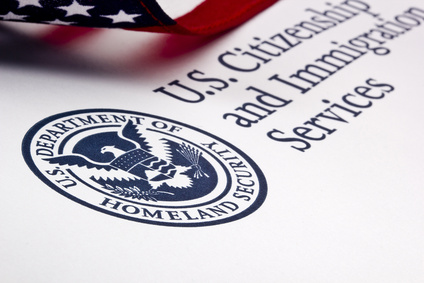POSTING DATE: June 18, 2018
Learn More About:
Immigration News & Updates eNewsletter © 2011 - 2018
For questions about U.S. Residency, Green Cards and Immigration Visas, Visit our Website at: www.ImmigrateToday.com or call our office at: (954) 382-5378
Check Out This Cool Stuff For Immigrants....
Immigration
Questions & Answers
This Week's Immigration News
Question: I have a question, I am a resident and I just got married to my wife who is in Jamaica with my 2 kids, 7 & 10. I can file for my citizenship in 2020. Should I wait until then to file for my family or should I start the process for them now. Is there any difference in cost? What about the timing?
Answer: That is a great question. U.S. Residents (Green Card holders) can sponsor their spouse and minor children, but the waiting time for an immigrant visa is about 1 ½ to 2 years. There is no need for a Resident to wait until he or she obtains U.S. Citizenship. The only time a Resident must wait until he or she obtains U.S. Citizenship in order to sponsor a spouse or minor child, is when the family members are inside the U.S. with expired immigration status. In such cases, the spouse and minor children are not eligible to adjust status to residency inside the U.S.. Only parents, spouses and minor children of U.S. Citizens, who entered the U.S. legally, but have fallen out of status, are eligible to stay in the U.S. and obtain a Green Card.
When a Resident sponsors his or her spouse, the minor children eligible to immigrate are included in the family petition. That means that only one petition needs to be filed, and it covers the family. The current USCIS filing fee for a family petition is $535. If a Resident naturalizes and becomes a U.S. Citizen, he or she must then file a separate family petition for each child, in addition to the one filed for the spouse. In your case, its best for us to file one family petition now for your wife, which will include your children and once they immigrate to the U.S. in several years, you can obtain your U.S. Citizenship.
New Policy Extends Status of Conditional Residents From 12 to 18 Months
Helpful Immigration Tips You Can Use...
Immigration News & Updates eNewsletter
eNewsletter
The USCIS recently announced its new policy to extend the Residency status of immigrants with pending I-751, Petition to Remove Conditions on Residence, or Form I-829, Petition by Entrepreneur to Remove Conditions on Permanent Resident Status cases from 12 to 18 month.
The change is due to increased processing times over the past year which has resulted in some such cases taking up to 2 years or more. The USCIS receipt received once the I-751 or I-829 case is accepted will reflect the new 18 month extension.
Immigration How To:
How Do I Know What Documents I Need For My Marriage Interview?
US Seeks Pact With Mexico To Prevent Asylum Applications at U.S. Border
Tips On Successfully Filing Immigration Applications
As with most other major undertakings in life, it’s always very important to make sure that you meet all the eligibility requirements before filing any immigration application with the USCIS. This is particularly crucial now, since under Trump’s immigration policies, filing an immigration application when you are not eligible, can get you deported! Here’s a few tips to keep in mind when filing your own immigration forms:
1) Use the correct form: Be sure you have the most current edition of the form. Never pay for forms, they are free. To download the current edition of each form, go to www.USCIS.gov and click on the Forms link, then choose your form.
Marital Documents Are The Key To A Successful Marriage Residency Case!
Marriage residency cases can be very tough - even for those that are real! Commonly, couples navigating through marriage immigration process often find it daunting, unsure of the procedures, required documentation and timing involved. However, filing the case is just the start, the important part comes after that, in the time in between filing the case and the USCIS residency interview, when all the necessary marital documentation is established and compiled, in order to prove the legitimacy of the marriage.
In its continuing efforts to reduce lawful immigration, the Trump administration has begun negotiations with Mexico to enter into a Pact which would essentially eliminate the ability of immigrants to apply for asylum at the southern U.S. border.
Currently, any immigrant who presents themselves at the border, has the right to apply for asylum in the U.S. and seek protection under U.S. laws while waiting for the application to be processed, which can take many years. In the meantime, applicants generally receive employment authorization and the right to stay in the U.S. during the process.
International asylum treaties provide that an individual fleeing from persecution in their home country must generally make their claim for asylum in the first country they enter, if that country is considered a “safe third country.” If not, the asylum seeker can pass through the non-designated country to apply for asylum in the next safe country. The purpose for the rule is to encourage countries to live up to their responsibilities to provide safety to refugees. To discourage “asylum shopping”, some countries like the U.S. and Canada have entered into a safe third country agreement, which requires asylum seekers to make their application for asylum in the first country they enter, either the U.S. or Canada.
If the Trump administration has its way and enters into such an agreement with Mexico, nationals fleeing persecution in their countries would no longer be able to pass through Mexico to apply for asylum at the U.S. border. They would instead only be allowed to apply for asylum in Mexico. Critics say this move would be a human rights disaster for many fleeing persecution in Central and South America, including thousands of Venezuelans who make their way through Central America to Mexico and up to the U.S. border each month. Stay tuned…
Question: Morning, what’s the timeline for a brother in the Navy to file for his younger brother (22 years old) in Jamaica? Also what’s the timeline for the mother who is a Green Card holder to file for that son. Family is trying to make a decision and the best approach to take overall. Thanks
Answer: For citizens of Jamaica and most other countries except China, Philippines, India and Mexico, as long as the 22 year old is single, the U.S. resident mom filing is much faster, about 7 years. A sibling (brother/sister) filing takes about 14+ years!
Question: I’ve a situation and would very much appreciate your insight please. My cousin came to US on a f1 student visa which expires in 2020 I believe. Somehow during the transfer from one university to other he got out of status and he is still in US. In the meanwhile he got engaged to a US Citizen. Will he be able to file for Green Card if they get married without having to leave US? Or what are his options to get back in status. The bride’s side wants to make sure he’ll get his status back after marriage and it’s literally hanging for this one clarification. Please help me with this.
Answer: Since your cousin entered the U.S. legally, even though he fell out of status, we can still process his green card case inside the U.S. and he can live and work here while waiting for his green card. Once he gets married and his residency case is filed, he will be back in legal status again. It is now taking about 4+ months to get his work and travel permit once the case is filed.
Question: I have a question about my sons case. He is divorced and lives in Colombia. I am a resident and filed for him back in 2013 and got an approval letter from immigration a few years ago but nothing else since that time. I am still waiting for him to get his appointment at the embassy. I called the immigration and they say even though the case is approved, I still have to wait. Can you please tell me is there anything I can do to speed the process up?
Answer: Due to the high demand for Immigrant visas to immigrate to the U.S. and the small number of visas available per year, most relatives sponsored by U.S. Citizens and U.S. Residents must wait in long lines for an Immigrant Visa to be available.
For Adult children of U.S. Residents, the waiting line is currently about 7+ years long. Therefore, once the USCIS approves the I-130 Family Petition and issues the Approval Notice to the sponsoring parent, the case file is likely sent to the National Visa Center (NVC) and put on a shelf just waiting the many years for a visa to become available. Once the National Visa Center is notified by the Dept of State that a visa will be available soon, the NVC sends the sponsoring U.S. Resident parent a notification for payment of visa processing fees, which begins the final processing phase to prepare the case for the U.S. Consulate which will conduct the Immigrant Visa interview.
Once the interview is complete, Immigrant visa fees must be paid online and the officer sends the adult child a “package” to give the U.S. Immigration officers at the U.S. Port of Entry. Once the adult child enters the U.S. he or she is processed for Residency at the Airport and receives the Green Card in the mail within several months.
The Visa Bulletin website publishes dates of visa availability for all family categories each month. Using the I-130 Approval Notice, there is a date called a “Priority Date” listed. When the Visa Bulletin reaches that date in the appropriate family category, a visa is available for the adult child. The Immigration Visa category for Adult, Single children of U.S. Residents is called “F2B”. Currently, this category has Immigrant visas available for I-130 petitions filed in June of 2011.
Since you filed the family petition for him in 2013, he has a “Priority date” of 2013 and he will need to wait another two years or so. There is nothing that you can do now to speed up his case, but you can keep the NVC up to date with your current address. Once the NVC begins preparing your son’s case for the consular interview, let me know and we can take care of preparing the NVC package with the financial and civil documents required.
Visit the Dept of State’s Visa Bulletin:
Read more information about family Immigrant Visa waiting lines:
2) Supporting Documents: Make sure and include all required documents so your case is not delayed. Read the Form Instructions and enclose copies of the required supporting documents listed. Never send originals!
3) Foreign Language Documents: All documents in a foreign language must be accompanied by an English translation and “Certificate of Translation” signed by the translator, attesting to the fact that they are fluent in the foreign language and English. Example: I [name of translator], certify that I am fluent in the English and [type in name of foreign language, for instance, Spanish] languages, and that the above is an accurate translation of the attached document. Have the translator sign, date and type in his or her address. Note that an Applicant, family member or anyone else can be the translator, you do not need a certified translator or any other special certification.
4) Copies: Make and keep copies of every page of your signed application, all supporting documents and check/money order for your records.
5) Filing Fees: Make sure the USCIS filing fee is correct. Go online to www.USCIS.gov and click on the Forms link to see the current filing fee for each form. You can pay by check/money order or credit/debit card. You can use a personal check to pay the filing fees, just note that it can take 2+ months for the USCIS to deposit it, so make sure the funds are there, otherwise there is a $30 “insufficient funds” fee. If you use a Money Order, have it issued by your bank, rather than a convenience store or postal service, in case you need to get a copy of the cancelled check (to see your case number on the back-in case you don’t receive a USCIS receipt). If you pay by credit card, you have to download and complete form 1450 and place on the top of your application.
6) Sending your application: Use USPS Priority Mail, Express Mail or Fed-ex/UPS with tracking. Be sure to get delivery confirmation a few days after you send your application, to confirm it was received and save the confirmation for your records. NEVER use Certified Mail, it is too slow.
7) Sign-up for E-Notification: Always file Form G-1145 with your application, to receive a text message or email e-notification confirming that the application was received and accepted for processing by the USCIS along with the case receipt number(s).
8) Sign-up for E-Mail Case Updates: Once you receive your USCIS Receipt (called I-797 Notice of Action) – usually in about 10 days, go online to www.USCIS.gov and click on “Check your case status” then sign-up for email updates on your case using your case number.
9) Check USCIS Processing Times: Go to www.USCIS.gov and click on “Check your case status” then scroll down and click on “USCIS Processing Times Information” and click on the Service Center or office where your case is processing to see the current processing times for your application type.
In marriage immigration, the most common cause of case delay and denial is due to lack of marital documentation. As I always tell my clients, in immigration, nothing is real to a USCIS officer unless you have a document to prove it, simple as that. Even though it may seem practical and cost efficient for a couple to live with relatives that is usually a red flag for a USCIS officer trying to determine if a marriage is real. Similarly, when a couple has no utility bills in their name and does not share a joint bank account, more red flags. Even though a marriage is genuine, spousal immigration cases which lack typical marital documentation can be drawn out for years and be needlessly tortuous for a couple. Here are a few tips for couples representing themselves in the residency process:
1) Take the process very seriously – it’s better to be over prepared, rather than under prepared and delay the green card process
2) Do whatever it takes to have a joint marital bank account that both spouses use on a daily basis (not just a saving account). Never use separate bank accounts and always pay utilities, rent and other expenses from bank funds, not cash.
3) Don’t go paperless! I love trees and the environment, but the USCIS could care less, they want to see marital bills, statements and invoices with joint names or at least separate bills for each spouse going to the same marital address
4) Have a lease with both spouses’ names and pay rent from your joint account (even if you live with relative – which you should not!)
5) Always do your tax return married filing jointly, don’t file head of household just to get more money back from the IRS, you are shooting yourself in the foot. Do you want a Green Card or a little more money?
6) Split the utility bills, get several in the U.S. Citizen spouse’s name and several for the foreign national spouse
7) Get joint car insurance, don’t stay on your parents policy, really, you are married, act like it!
8) Make sure both spouses Driver’s Licenses are at the same marital address
9) Take lots of pictures with family and friends in different occasions.
These are just the bottom line documents the USCIS officer is looking for. However, the more marital documents, the better, like joint car registration, joint health insurance, joint cell phone plan, fitness club family plan, etc, etc. The more documents a couple brings to their USCIS interview, the faster the case will be approved. Couples who get stuck somewhere in the process can always give me a call and I will try to steer them in the right direction. Good luck!
USCIS Announces Delays In Receipt Issuance for Removal of Conditions
Generally, once an application is filed with the USCIS, a receipt notice, called an I-797 Notice of Action is issued to the applicant within about 7-10 days. In the case of Form I-751, Petition to Remove Conditions on Residence the receipt not only notifies the applicant that the case has been received, but further extends the immigrant’s residency status.
Last week, the USCIS announced that the service center which handles receipting of these cases was experiencing delays in data entry of cases received. As a result, the center has a backlog of cases waiting for receipts to be issued.
According to the notice, Form I-751 petitions filed by applicants in May 2018 may not have received receipts. The service center advises applicants not to file a duplicate case and that it hopes to complete entry of those cases by the end of June. Residents with expired Green Cards can call the USCIS 800# and receive an appointment at the local USCIS field office to obtain temporary residency until the receipt is issued. Be prepared to show proof that the I-751 application was sent to the USCIS, by bringing a copy of the USPS, FedEx or other delivery receipt.












